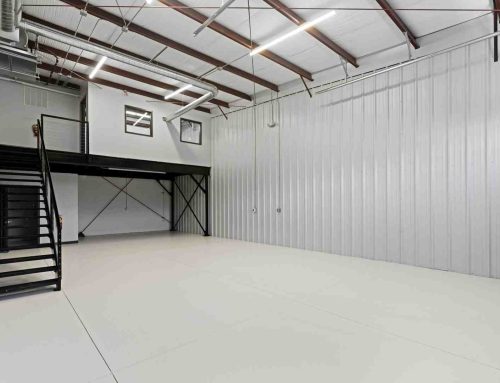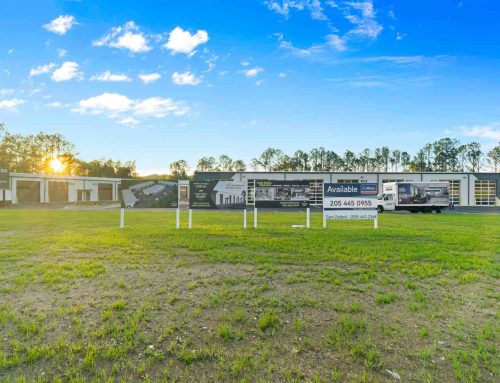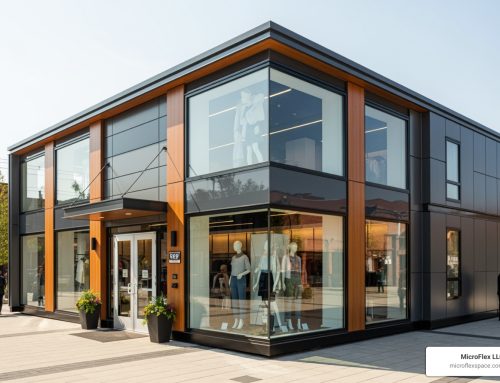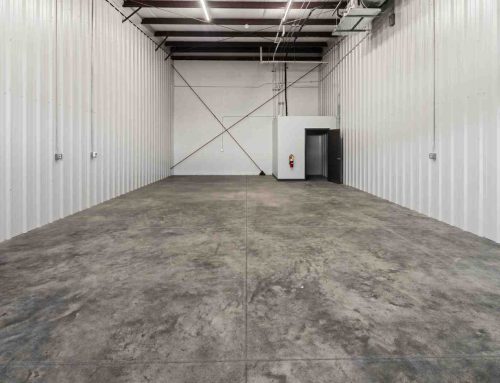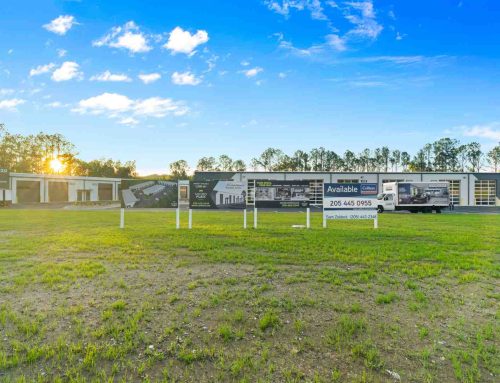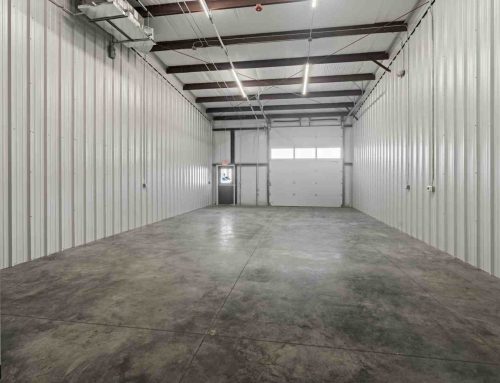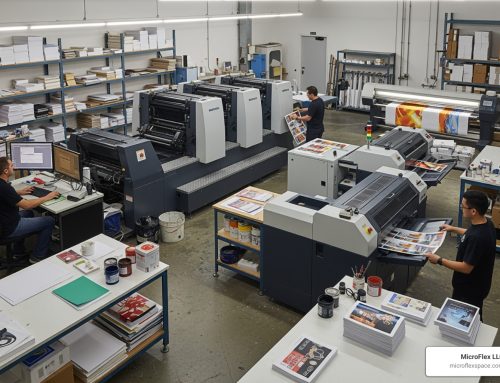
Small Space, Big Productivity: Transform Your Home Office
Let’s face it – not everyone has the luxury of a dedicated room for their home office. If you’re searching for home office solutions for small spaces, you’re definitely not alone!
Did you know nearly half of remote workers don’t have a dedicated office space at home? Instead, they’re creating productive corners in shared or multipurpose rooms. The pandemic-fueled work-from-home revolution has releaseed a wave of creativity in how we carve out functional workspaces in even the tiniest apartments.
Here’s what I’ve learned after helping countless clients optimize their small spaces: compact doesn’t mean compromised. In fact, a well-designed small workspace can sometimes boost your productivity more than a sprawling office – everything you need is just a swivel chair spin away!
The game-changer for small spaces? Think vertically, not horizontally.
When your floor square footage is limited, your walls, corners, and even that neglected closet become prime real estate for creating a functional workspace.
| Top Small Space Home Office Solutions | Why It Works |
|---|---|
| 1. Wall-mounted folding desks | Free up floor space when not in use |
| 2. Corner L-shaped desks | Maximize awkward corners |
| 3. Vertical storage (shelves, pegboards) | Use wall space instead of floor space |
| 4. Closet conversions (“cloffices”) | Repurpose underused storage areas |
| 5. Multi-functional furniture | Desk/dining table combos or vanity/desk setups |
I’m Sam Zoldock, and I’ve spent years in commercial real estate helping people make the most of every square inch. What fascinates me is how the principles that work for businesses can transform your home workspace too. Whether you’re converting a closet or maximizing an awkward corner, there’s always a creative solution waiting.
Throughout this guide, I’ll share practical tips that don’t require knocking down walls or spending a fortune. We’ll explore everything from fold-away desks that disappear after work hours to clever storage hacks that keep your compact workspace feeling organized rather than overwhelming.
The best home office solutions for small spaces combine functionality with your personal style – because even the smallest workspace should feel like somewhere you actually want to spend time. Let’s transform that tight corner into your productivity powerhouse!
Home Office Solutions for Small Spaces: Quick-Start Checklist
Ready to create your perfect small-space office? Before diving into furniture shopping, let’s take a moment to set yourself up for success. The most productive tiny workspaces don’t happen by accident—they start with smart planning.
Grab your measuring tape and let’s begin with a proper space audit. Walk through your home with fresh eyes, looking for those underused corners or nooks that might be perfect for a compact desk setup. That awkward space under the stairs? The unused corner of your bedroom? These might be office gold mines waiting to be finded.
Once you’ve spotted potential locations, measure twice, buy once. I can’t tell you how many clients I’ve worked with who purchased the perfect desk only to find it was two inches too wide for their space! Document every dimension before hitting “buy now” on that furniture website.
As you organize your new workspace, accept the declutter rule: for every new office item you bring in, something else needs to go. This simple principle keeps your space balanced and prevents the gradual creep of office supplies into your living areas.
The secret weapon for small-space warriors? A vertical mindset. When floor space is limited, your walls become your best friends. Train yourself to look up, not out, when considering where to place storage, lighting, and even your workspace itself.
Above all, don’t compromise on ergonomic basics. A cramped office doesn’t mean you should accept a cramped body. According to scientific research on ergonomic posture, maintaining proper alignment is essential for preventing pain and staying productive, regardless of your space constraints.
Best Practices for “home office solutions for small spaces”
The difference between a cramped corner and a productive mini-office often comes down to a few core principles. First, accept minimalism in your workspace. Be ruthless about keeping only what you absolutely need within arm’s reach. That collection of decorative paperweights? Maybe find them a new home.
Creating visual zones helps your brain switch into work mode, even without walls. Something as simple as a distinct desk lamp or a different wall color can signal to your brain that “this is where work happens”—even if “this” is just three feet from your bed.
Nothing makes a tiny workspace feel more chaotic than a tangle of cables snaking across your desk. Master cable management with simple solutions like cord clips or under-desk trays to instantly make your space feel more organized and spacious.
Perhaps most importantly, implement a daily reset routine. As Emily Forgione, who transformed her 235-square-foot Brooklyn studio to include a home office, shares: “Ending each day by clearing my desk completely changed how I felt about my space. I no longer felt like work was taking over my home.”
Five-Minute Reset Routine
Speaking of daily resets, here’s a simple end-of-day routine that takes just five minutes but creates clear boundaries between work and home life:
Take a moment for rapid tidy—clear away dishes, file or digitize papers, and wipe down surfaces. Aim for inbox zero (or as close as you can get) to prevent digital clutter from spilling into tomorrow. Finally, give yourself a stretch break to physically disconnect from your workspace, especially important when your “commute” is just a few steps away.
“You will be surprised by how many smart solutions you can fit in to give you the workspace you need,” notes a design expert from IKEA. This optimism reflects what we’ve seen with our clients at MicroFlex™ LLC – sometimes the smallest spaces inspire the most creative and efficient solutions. When space is limited, every inch counts—and every inch can be maximized with the right approach.
Choose the Perfect Desk for Tiny Footprints
The desk is the heart of any home office, and choosing the right one for a small space can make or break your setup. It’s fascinating to see how our work habits have changed – sales of small desks (under 40 inches wide) increased by over 200% between 2020 and 2023, showing just how important this piece of furniture has become for remote workers.
When I help clients find the perfect desk for tight spaces, I always start by looking at floor space requirements. Here’s how different desk types stack up:
| Desk Type | Floor Space Needed | Best For | Average Price Range |
|---|---|---|---|
| Wall-mounted | 0-4 sq ft | Ultra-small spaces | $100-300 |
| Floating | 0-4 sq ft | Minimalist setups | $150-400 |
| Corner/L-shaped | 9-16 sq ft | Maximizing corners | $150-500 |
| Secretary | 4-9 sq ft | Hide-away solutions | $200-600 |
| Standing | 4-9 sq ft | Health-conscious users | $200-800 |
| Fold-away | 0-4 sq ft when closed | Multipurpose rooms | $100-300 |
| Lap desk | 0 sq ft | Bed/couch workers | $30-100 |
I love what one design expert recently told me: “Just because you’re short on space doesn’t mean you have to skimp on style!” This perfectly captures what we’ve observed at MicroFlex™ LLC, where our clients often find that space constraints actually lead to more creative and neat solutions.
Desks < 40″ Wide—”home office solutions for small spaces”
When every inch counts, you need a desk that delivers function without overwhelming your space. These compact options have become incredibly popular for good reason:
Floating desks attach directly to the wall with no legs, creating a light, airy feel in your space. The area underneath stays open, making your room feel larger. I’ve noticed online searches for these clever solutions have jumped 150% since 2021.
Wall-mounted drop-leaf tables might be my favorite space-saving miracle. They fold flat against the wall when you’re not working, then pull down to create a sturdy surface exactly when needed. Perfect for truly tiny spaces!
Triangle desks transform those awkward corners into productive workspaces. Why let a corner go unused when it could become your office?
Folding laptop tables offer ultimate flexibility – lightweight enough to move anywhere and slim enough to slide into a closet after hours.
I recently read a review from someone who purchased a compact desk that perfectly summed up the experience: “I can’t say enough positive things about this product. Everything fits on this desk…” This echoes what we hear from visitors to our Birmingham, Huntsville, and Auburn-Opelika locations – sometimes the smallest solutions create the biggest impact.
Need more inspiration? Check out these 38 small-desk ideas showcasing the incredible range of options available today.
Multifunctional Desks That Add Storage
When space is at a premium, furniture that serves multiple purposes becomes your best friend. These clever options pull double-duty:
Ladder desks combine a work surface with built-in shelving above, making the most of vertical space. They’re perfect for displaying a few cherished items while keeping essential supplies within reach.
Secretary desks offer a classic solution with modern appeal. These fold-down designs hide your workspace behind a decorative cabinet front when closed, instantly changing your office back into living space.
Vanity-desk combos work beautifully in bedrooms, serving as both makeup stations and workspaces. With the right chair and lighting, you can transition from morning routine to workday with ease.
Drop-leaf desks with built-in drawers eliminate the need for separate filing cabinets or storage units – a huge space-saver in tiny rooms.
I love what Emily Edelman shared about her closet-to-office change: “My biggest spend was on the stack of flat file drawers in the office nook that used to be a closet. You can store a surprising amount in drawers that are only 1.5″ high…” Her experience perfectly illustrates how thoughtful storage solutions can transform even the smallest spaces into functional home office solutions for small spaces.
Maximize Storage & Stay Clutter-Free
When I talk with our clients at MicroFlex™ LLC about home office solutions for small spaces, storage always comes up as a major concern. And no wonder—a 2022 survey found that over 80% of small home office users reported a significant boost in both organization and productivity after adding vertical storage. This completely tracks with what we’ve seen in our work helping folks transform challenging spaces.
The secret to conquering clutter in tight quarters? Stop thinking about the floor and start looking up. Your walls are untapped real estate just waiting to be put to work with vertical shelving that creates storage without stealing precious floor space. Pegboards have become my personal favorite recommendation—they’re incredibly versatile for hanging everything from scissors to chargers.
For items that need to move around, rolling carts are lifesavers. I’ve seen clients use them as mobile filing cabinets, printer stands, or even coffee stations that can be tucked away after morning meetings. And don’t overlook the power of good drawer dividers and hidden bins—they can transform chaotic drawers into organized systems while keeping visual clutter at bay.
One IKEA designer shared a tip I love passing along: “Perhaps the smartest storage solution of all is having your things packed and ready in a handy tote bag on a hook.” This works brilliantly for the growing number of people who bounce between home, coffee shops, and occasional office visits.
And remember, if your business outgrows your home setup, our Small Business Office Solutions are designed to scale with you, offering the same smart space utilization at a professional level.
Use Vertical Space Like a Pro
When floor space is at a premium, your walls become your best friends. I’ve helped countless remote workers transform their tiny spaces with floating shelves installed at varying heights to create custom storage walls. The before-and-after difference is always dramatic.
Cube storage units deserve special mention for their versatility—they can evolve as your needs change, shifting from book storage to supply organization to decorative display. For an instant storage upgrade, consider adding an over-desk hutch to your existing workspace. One client called this her “game-changer” since it doubled her storage without requiring any additional floor space.
Don’t forget about wall-mounted cabinets if you prefer keeping supplies hidden. As one design expert told me, “Use shelves, organizers and hanging accessories on the walls, leverage vertical space, and add baskets or bins to keep essentials organized.” This approach has transformed countless cramped corners into efficient workstations.
Smart Cable & Tech Management—”home office solutions for small spaces”
Nothing makes a tiny space feel more chaotic than a tangle of cords snaking across your desk. I’ve found that implementing even basic cable management can make a space feel twice as large and ten times more professional.
Start with cord clips and cable sleeves to tame the inevitable wire jungle. For a more comprehensive solution, under-desk cable trays work wonders by collecting power strips and excess cord length, keeping them completely out of sight and mind.
I’m also a huge advocate for USB hubs and wireless chargers—they’ve dramatically reduced the number of cables in my own workspace. And if desk real estate is particularly tight, a keyboard tray can free up valuable surface area by moving your keyboard below when you’re not actively typing.
As one home office specialist perfectly put it, “Cable management is one of those small details that makes a huge difference in how professional and organized your workspace feels.” We’ve seen this truth play out repeatedly in the flexible office spaces we offer at MicroFlex™ LLC across Birmingham, Irondale, and Hoover.
When cables are managed and storage is optimized, even the smallest spaces feel intentional rather than cramped. It’s about working smarter, not larger—a philosophy that guides everything we do at MicroFlex™.
Light, Seating & Ergonomics in Compact Areas
Even the smallest home office needs proper lighting and ergonomic seating to support your productivity and health. I’ve seen how these elements can make or break a workspace. According to ergonomic experts, poor posture and inadequate lighting are leading causes of work-from-home discomfort and decreased productivity—something we hear about frequently from clients visiting our MicroFlex™ locations.
When it comes to lighting in tight quarters, you don’t need floor lamps eating up your precious space. Task lighting focused directly on your work area can be mounted on walls or clamped to surfaces. Pendant lamps hang from the ceiling, keeping your limited floor and desk space completely free. Many of my clients have finded that daylight bulbs make a remarkable difference in their mood and energy levels—they mimic natural light and can help maintain your circadian rhythm when working in darker corners of your home.
“This pendant lamp provides good, glare-free light and has a simple design that fits most styles,” notes an IKEA product description. I couldn’t agree more—good lighting is often overlooked but makes all the difference in reducing eye strain and creating a professional atmosphere, even in the coziest nook.
For seating in tight spaces, think beyond the bulky executive chair. Compact ergonomic chairs (look for models under 24″ wide) can provide proper support without dominating your room. Don’t underestimate the power of a good footrest—it can dramatically improve your ergonomics without requiring a larger chair. Many of our Birmingham clients have found that simple cushions and lumbar supports added to existing seating can transform comfort levels without investing in new furniture.
Choosing the Right Chair for Tight Spots
Not all office chairs work in small spaces. I’ve helped countless clients find the perfect balance between comfort and compactness:
Armless swivel chairs have become increasingly popular for home office solutions for small spaces. They tuck neatly under desks when not in use and offer full mobility without the extra width that arms require. Saddle stools might look unconventional, but they promote good posture while maintaining an incredibly small footprint—perfect for ultra-tight spaces.
For something truly different, kneeling chairs encourage proper spine alignment while occupying far less space than traditional office chairs. And don’t overlook folding desk chairs if your office doubles as another room—simply fold and store them when your workday ends.
As one design blogger puts it, “Have some fun with your office chair—you’re at home after all, so anything goes!” I love this playful approach. Your home office should reflect your personality while still supporting your physical needs.
Layered Lighting for Productivity
Proper lighting transforms both the functionality and feel of a small workspace. I always recommend a layered approach:
Start with LED strip lights installed under shelves or along the back of your desk. They create ambient lighting that reduces eye strain without taking up any surface space. Clamp lamps attach directly to shelves or desk edges, providing focused task lighting exactly where you need it.
Consider your window positioning carefully. Place your desk perpendicular to windows rather than facing them or having them at your back. This reduces glare while maximizing natural light—nature’s best productivity booster. And whenever possible, choose dimmable options so you can adjust lighting throughout the day to match your energy levels and tasks.
One client in our Irondale location completely transformed her tiny home office simply by replacing a single overhead bulb with three layered light sources. Her productivity skyrocketed, and she reported fewer headaches at the end of each workday.
For inspiration on combining efficient lighting with space-saving furniture, check out the IKEA drop-leaf desk designs that pair beautifully with wall-mounted lighting solutions. These thoughtful combinations demonstrate how home office solutions for small spaces can be both practical and stylish.
Creative Layouts & Unconventional Nooks
Some of the most effective home office solutions for small spaces come from thinking outside the traditional office box. Since 2021, online searches for floating desks and wall-mounted workstations have jumped by 150% – clear evidence that people are getting more creative with their space.
Have you considered turning that unused closet into your next workspace? The cloffice (closet office) has become one of the most popular space-saving solutions – simply remove the doors, add a desk surface and some shelving, and you’ve created a dedicated workspace that disappears when you close the doors. As one happy DIYer shared: “I adore this little closet office nook, especially compared to what it used to be.”
That empty hallway could be prime real estate for a slim desk setup that doesn’t steal space from another room. Or look under the stairs – that awkward triangular area often collects junk, but with a custom desk and some shelving, it transforms into a cozy work nook with built-in privacy.
If your home has a small landing at the top of the stairs, consider how this transition space might accommodate a compact desk. And for those blessed with high ceilings, a small mezzanine loft platform creates a naturally separated workspace that feels both connected to and removed from the main living area.
An IKEA design expert puts it perfectly: “Unusual and unused spaces (like a hallway or under the stairs) can be put to good use for working from home.” At MicroFlex™ LLC, we’ve seen this same creative thinking from businesses that maximize every square foot of their space – sometimes the most productive areas come from the most unexpected places.
Shared or Multipurpose Room Strategies
When your office must share space with your bedroom, living room, or dining area, creating mental and physical boundaries becomes crucial for work-life balance.
Zoning rugs work wonders for visually separating your workspace from the rest of a room – the brain responds to these subtle cues more than you might think. For more defined separation, lightweight room dividers or bookshelves create physical boundaries without permanent walls. Many of our clients at MicroFlex™ LLC use similar techniques to create distinct zones within their flexible spaces.
If you prefer a more temporary solution, fold-up screens can be deployed during work hours and tucked away afterward – perfect for those “now you see it, now you don’t” changes. Another subtle trick is color coding – using different color schemes to visually separate work and living areas helps your brain context-switch.
Caitlin Tateishi, who manages to work from her tiny 300-square-foot studio, has mastered the art of time-based changes: “I have definitely worked and planned a lot to make my small space super functional. The convertible side table in the entrance folds out into a full dining table for dinner parties…”
When your business outgrows your home office, our Flexible Office Space Birmingham locations offer the same adaptability at a professional scale.
Style & Personalization Without Crowding
A small office doesn’t have to look like a boring utility closet. With thoughtful design choices, your tiny workspace can reflect your personality without consuming precious square footage.
Try color drenching – painting walls, trim, and even the ceiling in the same color creates a cohesive, expansive feel that makes small spaces seem larger. Or make a big impact with minimal space using statement wallpaper on just one wall – it creates a focal point and adds personality without taking up any physical space.
Mini plants bring life and improved air quality to your workspace with minimal footprint – a small succulent or air plant needs just a few inches of space. Instead of cluttering your desk with framed photos, install floating picture ledges on the wall to display artwork and memories. For ultimate customization with zero footprint, pegboard accessories with colorful hooks and holders express your style while keeping essentials within reach.
Designer Cecilia Elguero captures the essence perfectly: “It’s all about creating a little magical corner for yourself. It’s a place where you want to be productive but also feels like a special spot.” Even in the smallest spaces, your workspace should feel like somewhere you want to be – not just somewhere you have to be.
Frequently Asked Questions about Small-Space Home Offices
What are the most affordable small desk options?
Finding budget-friendly desk solutions doesn’t mean sacrificing style or functionality. Wall-mounted folding tables often cost less than $100 and can be found at popular retailers like IKEA and Amazon. These space-savers give you a work surface when needed and disappear when they’re not.
Don’t overlook what you already own! That narrow console table gathering dust in your hallway or even a sturdy shelf might be your next desk with a little creativity. Some of the most charming home office solutions for small spaces come from repurposing existing furniture.
For the truly budget-conscious, DIY options abound. A simple piece of solid wood mounted on brackets can create a custom desk for just the cost of materials. One of our MicroFlex™ clients shared how she created a beautiful oak desktop for under $50 using materials from a local hardware store.
If floor space is non-existent, consider lap desks starting around $30. As one enthusiastic Amazon reviewer put it: “This desk is the best!! This is a verified purchase, I bought it with my own $!” Their excitement mirrors what we often hear from people who find simple solutions to complex space problems.
How can I separate work and home life in one room?
Creating boundaries in multipurpose spaces is both a physical and psychological challenge. Start by establishing a consistent schedule—work only during set hours to help your brain associate the space with productivity during those times and relaxation afterward.
Home office solutions for small spaces often include clever visual dividers. A folding screen, strategically placed bookshelf, or even a tall plant can create the illusion of separate zones without permanent walls. These visual cues help your brain transition between work and personal modes.
Lighting makes a powerful difference too. Consider using a specific desk lamp only during work hours, then switching to softer ambient lighting when you’re off the clock. This simple change signals to your brain that the workday has ended.
The end-of-day ritual is particularly important. Store your laptop and work materials in a dedicated container when you finish working. This physical act of “putting away work” helps create mental closure, even if your desk is just feet from your bed.
“An organised small home office is good for the mind & soul, as well as helping productivity,” notes a design expert we work with at MicroFlex™. This organization extends beyond physical items to the mental boundaries we create between professional and personal time.
How do I keep my setup ergonomic without bulky furniture?
Maintaining proper ergonomics in tight quarters is challenging but absolutely essential for your long-term health and comfort. Home office solutions for small spaces should never sacrifice your physical wellbeing.
For proper monitor positioning, slim monitor stands or wall mounts can position your screen at eye level without the bulk of traditional monitor arms. This small adjustment prevents neck strain that can lead to headaches and discomfort.
Keyboard placement matters tremendously. Consider a pull-out keyboard tray that tucks away when not needed while maintaining proper wrist and arm positioning during use. As an ergonomics expert we consulted advises, “Center your keyboard so the ‘B’ key aligns with your body and elbows form a 90° angle.”
Don’t underestimate the power of portable supports. A small lumbar cushion can transform any chair into a more ergonomic seating option without requiring a new purchase. Similarly, a compact footrest (or even a sturdy box) under your desk ensures proper leg positioning and reduces pressure on your lower back.
Adjustable laptop stands create proper screen height without permanent fixtures—perfect for those who need to reclaim their dining table for dinner each evening. One of our clients at MicroFlex™ uses a collapsible stand that folds flat enough to slip into a book on her shelf when not in use.
These small adjustments might seem minor, but together they create a workspace that supports your body through long workdays—no matter how compact your setup might be.
Conclusion
Creating effective home office solutions for small spaces isn’t about having more square footage—it’s about making smarter choices with the space you have. Throughout this guide, we’ve explored how thinking vertically, choosing multifunctional pieces, and reimagining forgotten nooks can transform even the tiniest corner into a productive workspace.
The most successful small home offices share common elements that you can implement today:
One-touch productivity keeps everything essential within arm’s reach, eliminating the time-wasting hunt for supplies. When your stapler, charger, and notebook all have designated spots, you’ll find yourself slipping into work mode more easily each morning.
Flexible layouts adapt to your changing needs throughout the day. That fold-down desk that disappears after hours or the dining table that transforms into a conference space represents the kind of versatility that makes small-space working not just possible, but pleasurable.
Vertical thinking completely changes your approach to space. When you start looking up instead of out, suddenly those bare walls become your greatest asset for storage, organization, and even workspace solutions.
Daily reset routines create the psychological boundaries we all need when work and home share the same four walls. The simple act of tucking away your laptop and clearing your desk at day’s end tells your brain, “Work is done now.”
At MicroFlex™ LLC, we’ve watched countless entrepreneurs start their journey at a tiny desk wedged into a bedroom corner or a converted closet. These humble beginnings often grow into thriving businesses that eventually need more space. That’s why our flexible office solutions in Birmingham, Huntsville, Auburn-Opelika, and Hoover are designed to be the perfect next step when your business outgrows your home.
The beauty of mastering small-space productivity is that these skills transfer perfectly to larger environments. The organization habits, the thoughtful furniture selection, and the commitment to ergonomics you’ve developed will continue serving you well as your workspace evolves.
Whether you’re typing away at a desk tucked under your stairs or taking calls from a cleverly converted closet, some of the world’s most successful businesses started in spaces just like yours. Your creativity isn’t limited by square footage—sometimes, it’s even improved by it.
Ready to explore options beyond your home office? Explore our locations to see how MicroFlex™ LLC can provide your growing business with the perfect next step.









